Trees Birds Mammals Fish Amphibians Reptiles
Wild Algarve
Bookshop
Entoloma atromadidum A. M. Ainsw. & B. Douglas - Big Slateblue Pinkgill
Phylum: Basidiomycota - Class: Agaricomycetes - Order: Agaricales - Family: Entolomataceae
Distribution - Taxonomic History - Etymology - Identification - Culinary Notes - Reference Sources
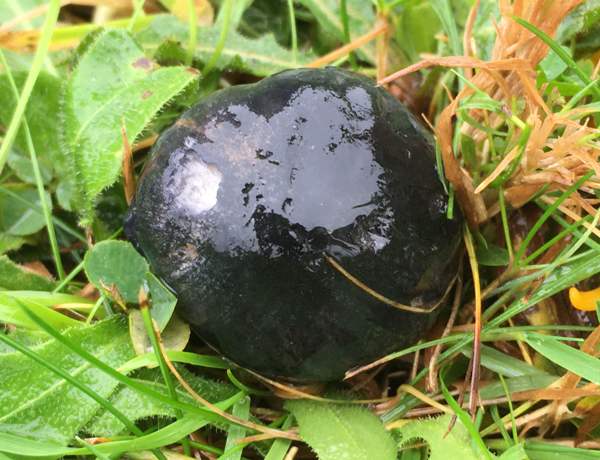
This largish (for an Entoloma) mushroom is a rare find in Britain and Ireland, and microscopic study of spores is necessary to seprate it from other macroscopically similar bluish pinkgills.
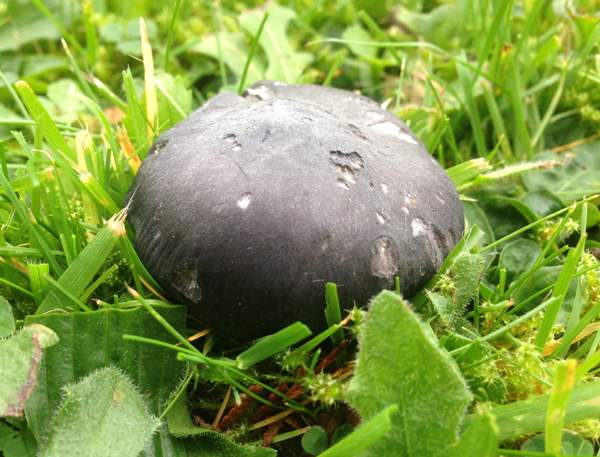
Distribution
Entoloma madidum is a rare find in Britain. This pinkgill probably occurs also in parts of mainland Europe, but at the time of writing this article (early 2020) I know of no credible records outside Britain.
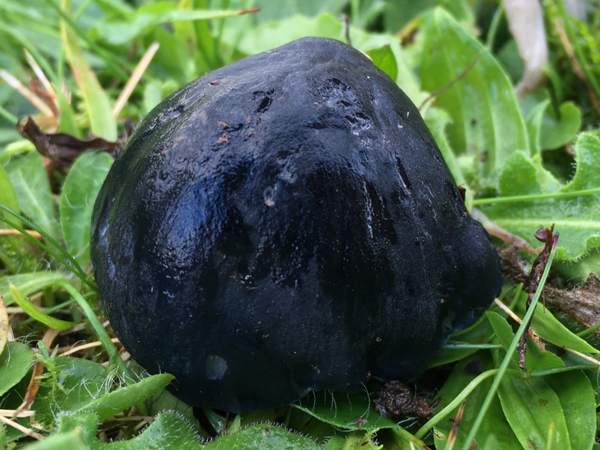
Taxonomic history
This species was separated from other big blue Entoloma species by DNA studies, the results of which were published in 2018 by British mycologists Martyn Ainsworth and Brian Douglas, who gave it the name Entoloma atromadidum. No synonyms exist for this name.
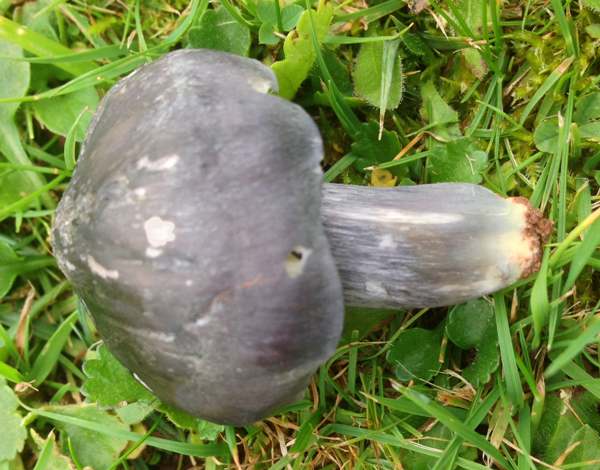
Etymology
The generic name Entoloma comes from ancient Greek words entos- meaning inner, and -lóma, meaning a fringe or a hem. It is a reference to the inrolled margins of many of the mushrooms in this genus.
The specific epithet atromadidum means a blackish form of E. madidum, which in turn is derived from Latin and means moist or wet.
Identification guide
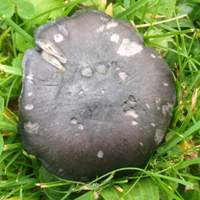 |
Cap
3 to 10cm across; initially sticky then dry and matt; convex to umbonate with an inrolled margin, becoming plano convex with a slight umbo and a wavy down-turned margin, often splitting; developing silky radial fibrils and radial groves or rivules towards the margin; cap flesh firm and white, sometimes with grey-blue streaks. |
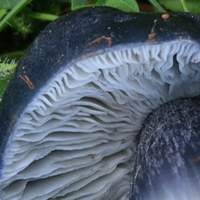
|
Gills
Sinuate, almost free; moderately crowded; edge usually irregularly serrulate; white with a faint blue tinge near the cap margin when young (left). |
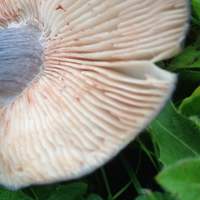
|
The gills become pink at maturity (left).
Basidia
Clavate, 28.8-50.0 x 8.8-11.2μm; mainly 4-spored, with basal clamps. |
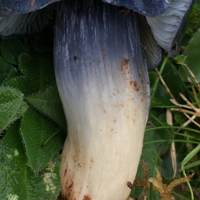
|
Stem
Cylindrical, sometimes tapering at base, longitudinally coarsely fibrillose, sometimes semi-reticulate; up to 5.5cm long and up to 1.5cm in diameter; colour as cap or somewhat paler but fading to white or yellowish buff at the base; no stem ring. Stem flesh white, sometimes mottled blue-grey. |
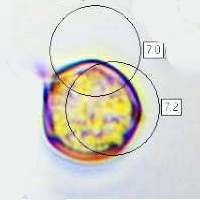 |
Spores
Angular, mostly pentagonal or hexagonal in side view, subglobose, 6.2-8.3 x 6.4-8.0μm; Qav=1.0; inamyloid.
Spore print
Pink. |
Odour/taste |
Mealy (like wet flour). |
Habitat & Ecological role |
Solitary or in groups in unimproved grassland. |
Season |
Fruiting in summer and autumn in Britain and Ireland. |
Similar species |
This mushroom may be poisonous; it could be confused with Entoloma bloxamii, which has somewhat larger spores, or with other big bluish mushrooms in the Entoloma genus. |
Culinary Notes
Entoloma atromadidum is very rare and should not be gathered except for scientific study. Its edibility is suspect and it has no culinary value.
Reference Sources
Fascinated by Fungi, 2nd Edition, Pat O'Reilly 2016, reprinted by Coch-y-bonddu Books in 2022.
Entoloma atromadidum A.M. Ainsw. & B. Douglas, in Ainsworth, Douglas & Suz, Field Mycology 19(1): 9 (2018) - British Mycological Society.
Dictionary of the Fungi; Paul M. Kirk, Paul F. Cannon, David W. Minter and J. A. Stalpers; CABI, 2008
Taxonomic history and synonym information on these pages is drawn from many sources but in particular from the British Mycological Society's GB Checklist of Fungi.
Acknowledgements
This page includes pictures kindly contributed by Simon Harding.
Top of page...
Fascinated by Fungi. Back by popular demand, Pat O'Reilly's best-selling 450-page hardback book is available now. The latest second edition was republished with a sparkling new cover design in September 2022 by Coch-y-Bonddu Books. Full details and copies are available from the publisher's online bookshop...